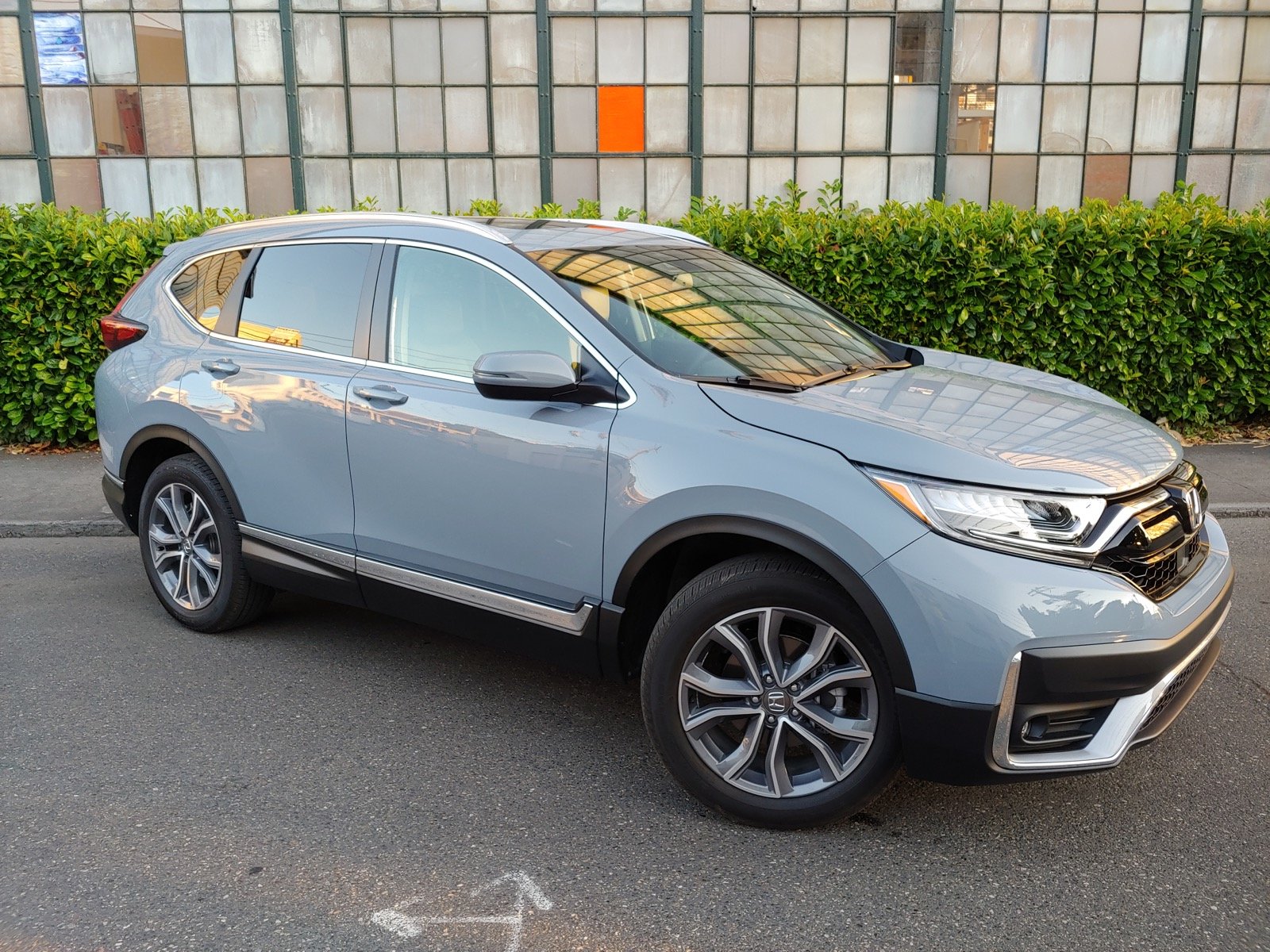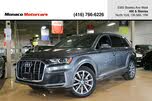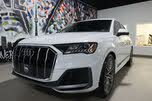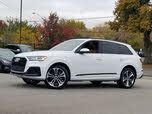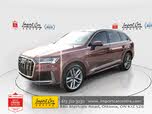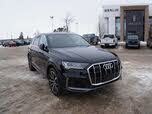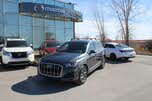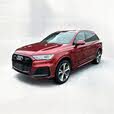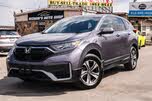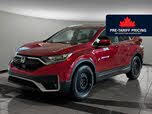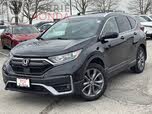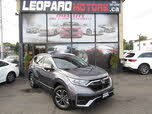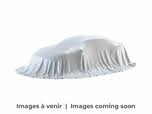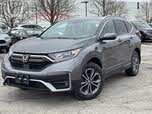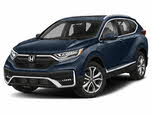2020 Audi Q7 vs 2020 Honda CR-V
Overview | ||
MSRP | $25,150 | $54,800 |
Average price | $28,469 | $42,943 |
Listings | ||
Ratings & Reviews | ||
User reviews | ||
Expert reviews | 7.5 out of 10Read full review | 7.7 out of 10Read full review |
Pros & cons | Pros
| Pros
|
Summary | Honda’s compact SUV has been satisfying buyers for more than two decades, with more than five million CR-V’s sold. Such a legacy means the CR-V has long had its wrinkles smoothed out into a comfortable and capable crossover package that’s only downside may be its sheer inoffensiveness. The 2020 model year saw engine and safety upgrades, which improve fuel efficiency and help to make Honda’s bestseller an even better value. | From its styling and interior to its powertrain and technology, the 2020 Audi Q7 gets a thorough update that brings it in line with other high-end cars and SUVs wearing four chrome rings on their grilles. Simultaneously, the changes for the 2020 model year keep this Audi competitive against the BMW X5 and Mercedes-Benz GLE-Class, its primary rivals in the midsize luxury SUV class. We packed a Q7 Technik full of family and luggage and set off to assess this Audi’s improvements on the open road. |
Video | No video found | No video found |
Popular Features & Specs | ||
Engine | 1.5L 190 hp I4 | 2.0L 248 hp I4 |
Drive Train | FWD | AWD |
Seating Capacity | 5 | 7 |
Horsepower | 190 hp @ 5600 rpm | 248 hp @ 5000 rpm |
MPG City | 28 | 19 |
MPG Highway | 34 | 23 |
Engine | ||
Engine Name | 1.5L 190 hp I4 | 2.0L 248 hp I4 |
Torque | 179 lb-ft @ 2000 rpm | 273 lb-ft @ 1600 rpm |
Horsepower | 190 hp @ 5600 rpm | 248 hp @ 5000 rpm |
Drivetrain | FWD | AWD |
Fuel Economy | ||
MPG City | 28 | 19 |
MPG Highway | 34 | 23 |
Interior | ||
Leather Seats | Standard | |
Seating Capacity | 5 | 7 |
Key Features | ||
Navigation System | Standard | |
Sunroof/Moonroof | Standard | |
Safety | ||
Front Crash Overall | 5 | |
Side Crash Overall | 5 | 5 |
Dimensions & Capacity | ||
Cargo Space | 39.2 cu ft | 14.2 cu ft |
Curb Weight | 3337 lbs | 4784 lbs |
Height | 66.1 in | 68.5 in |
Length | 182.1 in | 199.6 in |
Width | 73.0 in | 87.1 in |
Wheelbase | 104.8 in | 117.9 in |
Maximum Payload | 1358 lbs | 1367 lbs |
Number of doors | 4 | 4 |
Maximum Towing Capacity | 1500 lbs | 4400 lbs |
The 2020 Honda CR-V, part of Honda's fifth generation of compact crossovers, had a design that was both familiar and enjoyable. Its exterior styling, reminiscent of Honda's sedan lineup, leaned more towards a station wagon than an SUV, setting a standard for modern family transportation. However, the interior was a mix of high and low-quality materials, with upscale touches like wood-look trim and leather upholstery clashing with cheaper plastics. This contrast reminded drivers that even the more expensive CR-V models were essentially upgraded versions of a commodity car.
In contrast, the 2020 Audi Q7 featured design updates that enhanced its front and rear styling, aligning it with the flagship Q8 model. The Q7's interior adopted the high-tech dashboard and instrumentation from the Q8, replacing most physical controls with digital displays. The cabin, adorned in Okapi Brown leather and Gray/Brown Fine Grain Ash wood inlays, exuded a high-tech and upscale appearance. The Technik trim's standard multi-colour ambient lighting added a soothing ambiance at night, while the dual-pane acoustic side window glass ensured a remarkably quiet ride.
The 2020 Honda CR-V was equipped with a 1.5-litre turbocharged engine, producing 190 horsepower and 179 pound-feet of torque, paired with a continuously variable automatic transmission (CVT). Despite the CVT's reputation for sluggishness, Honda's implementation provided a responsive and fuel-efficient driving experience. The CR-V's car-like handling, nimble steering, and minimal body roll contributed to its excellent road manners. With a curb weight ranging from 1,521 kg to 1,641 kg, the CR-V was among the lightest in its class, enhancing both acceleration and fuel efficiency. FWD models achieved a combined fuel consumption of 7.7 litres per 100 kilometres, while AWD models managed 8.1.
The 2020 Audi Q7 55 TFSI featured a new 3.0-litre turbocharged V6 engine, delivering 335 horsepower and 369 pound-feet of torque. The engine was complemented by a 48-volt mild-hybrid system, enhancing fuel efficiency. Paired with an eight-speed automatic transmission and Quattro AWD, the Q7 offered various driving modes through Audi Drive Select. The SUV accelerated from zero to 100 km/h in 5.9 seconds and had a maximum tow rating of 3,500 kg. Fuel consumption was rated at 12.0 litres per 100 kilometres combined, with real-world testing showing an average of 11.2 L/100 km. The adaptive air suspension and Allroad drive mode provided excellent off-road capability, while the cabin remained quiet and comfortable.
The 2020 Honda CR-V excelled in interior space and practicality. Its cabin offered ample head- and legroom, with a seating position that maximized visibility. The cargo compartment matched the Volkswagen Tiguan in volume, despite the CR-V being shorter. Clever storage solutions, such as a deep centre console and a two-position load floor, enhanced its practicality. The CR-V's ability to accommodate various items made it easy to live with.
The 2020 Audi Q7, while offering three rows of seats, was best suited for five passengers. The third-row seat was cramped and reduced cargo space significantly. With the third row folded, cargo capacity expanded to 1,010 litres, and with both rows down, it reached 1,970 litres. The Q7's interior was comfortable for long journeys, with power-adjustable, heated, and ventilated front seats. However, practical interior storage was limited, with the centre console and door-panel bins offering minimal space for personal items.
The 2020 Honda CR-V's infotainment system showed its age, with a standard 7-inch touchscreen that felt small compared to competitors. The system lacked hard buttons, making it challenging to operate. While Apple CarPlay and Android Auto were standard, they felt tacked on rather than integrated. However, the CR-V offered plenty of USB ports and a wireless phone charger on higher trims.
The 2020 Audi Q7 introduced MMI Touch Response technology, featuring a 10.1-inch upper touchscreen and an 8.6-inch lower touchscreen. The system included natural voice recognition, handwriting recognition, and wireless Apple CarPlay. While the interface was generally intuitive, dry fingertips occasionally caused unresponsiveness. The Technik trim included a head-up display and a Bose premium sound system, enhancing the overall experience.
The 2020 Honda CR-V came standard with the "Honda Sensing" suite, including forward-collision warning, automatic emergency braking, lane departure warning, and adaptive cruise control. The CR-V earned a five-star rating from the NHTSA and a Top Safety Pick designation from the IIHS, with caveats for trims below Touring due to headlight performance. A safety recall affected a small number of vehicles.
The 2020 Audi Q7 featured advanced driving-assistance systems, including Emergency Assist, Turn Assist, and Adaptive Cruise Assist. However, the traffic-sign recognition system occasionally misinterpreted signs, leading to unexpected braking. The Q7 received the highest ratings from the IIHS, except for its "poor" headlight assessment.
CarGurus highlights
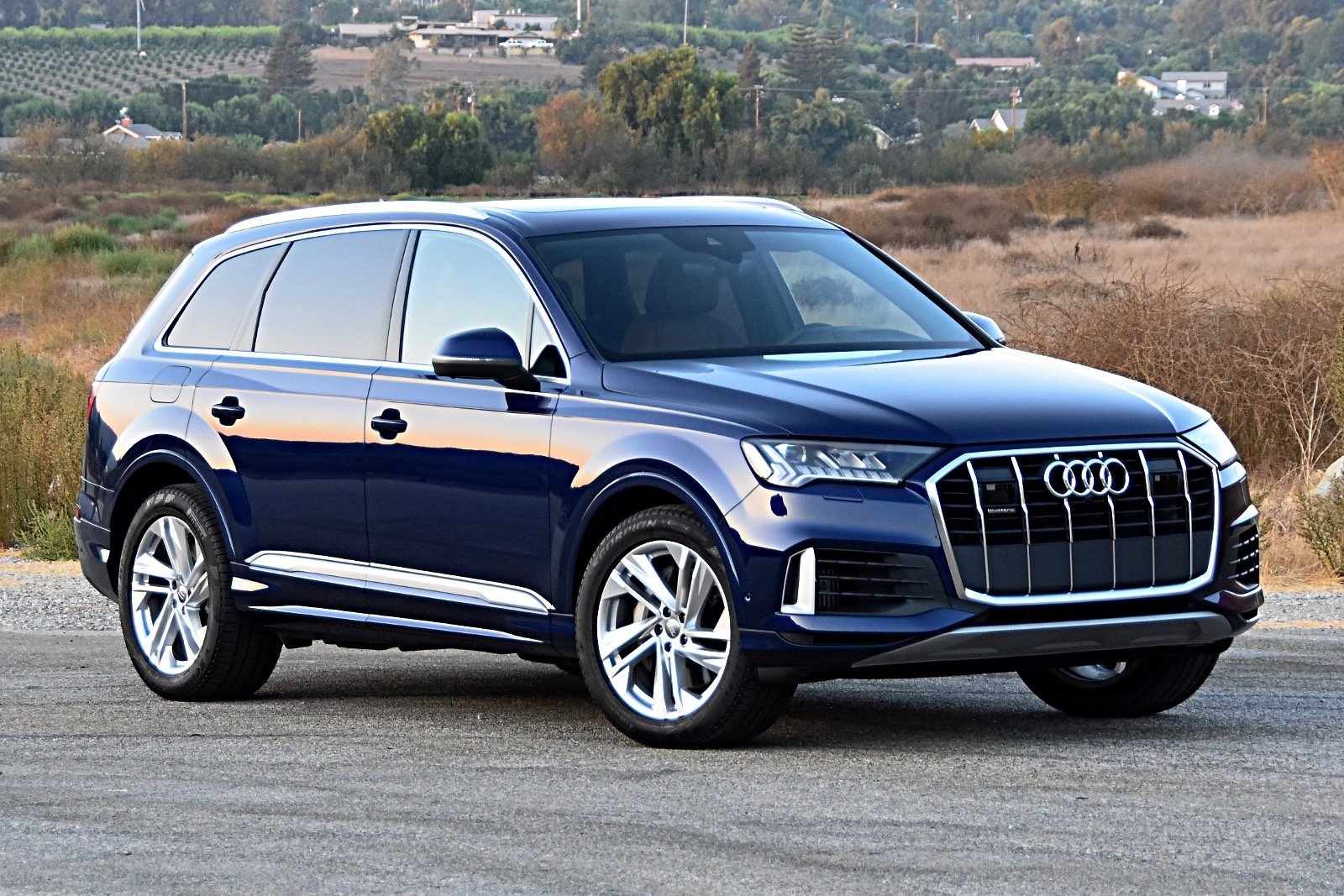
According to CarGurus experts, the overall rating for the 2020 Honda CR-V is 7.5 out of 10, while the 2020 Audi Q7 scores 7.7 out of 10. Based on these ratings, the Audi Q7 is recommended for those seeking a luxury SUV with advanced features and a high-tech interior.
Choose the 2020 Audi Q7 if:
Shop Now- You desire a luxury SUV with advanced technology and a high-tech interior.
- You require significant towing capacity and off-road capability.
- You appreciate a quiet and comfortable ride with upscale materials.
Choose the 2020 Honda CR-V if:
Shop Now- You prioritize fuel efficiency and nimble handling in a compact crossover.
- You need a practical and spacious interior with clever storage solutions.
- You value a comprehensive suite of standard safety features.

By: CarGurus + AI
At CarGurus, our team of experienced automotive writers remain at the heart of our content operation, conducting hands-on car tests and writing insightful guides that are backed by years of industry experience. To complement this, we are harnessing AI to make our content offering more diverse and more helpful to shoppers than ever. To achieve this, our AI systems are based exclusively on CarGurus content, ratings and data, so that what we produce is both unique to CarGurus, and uniquely helpful to car shoppers.
